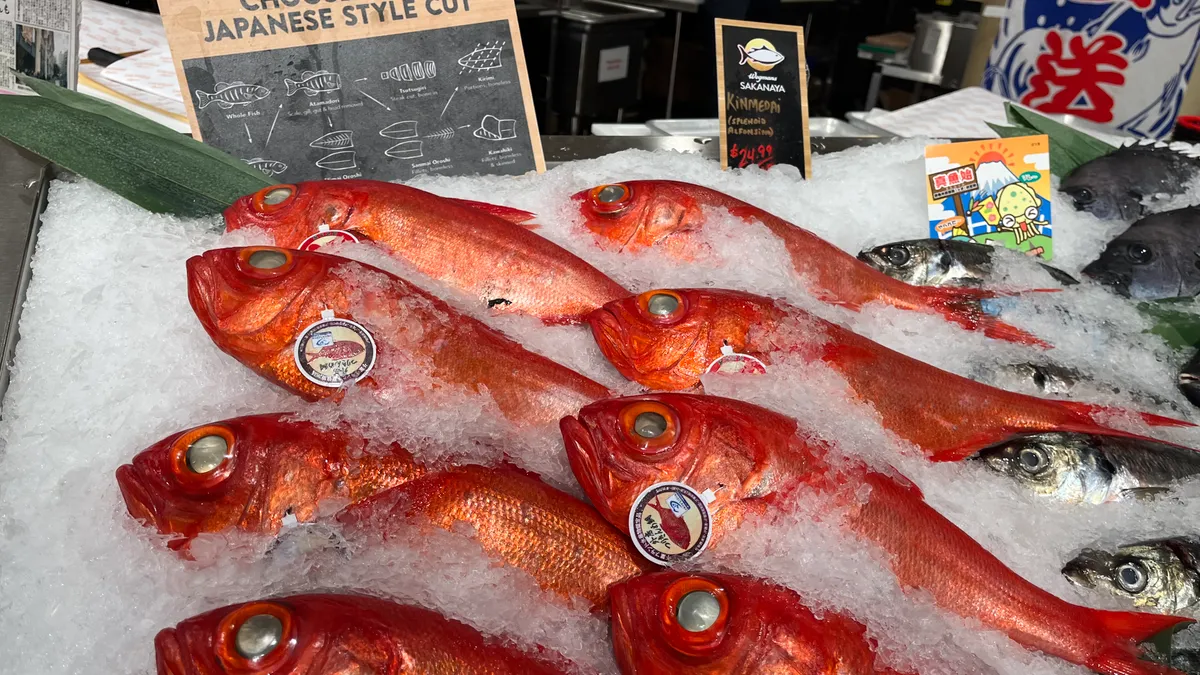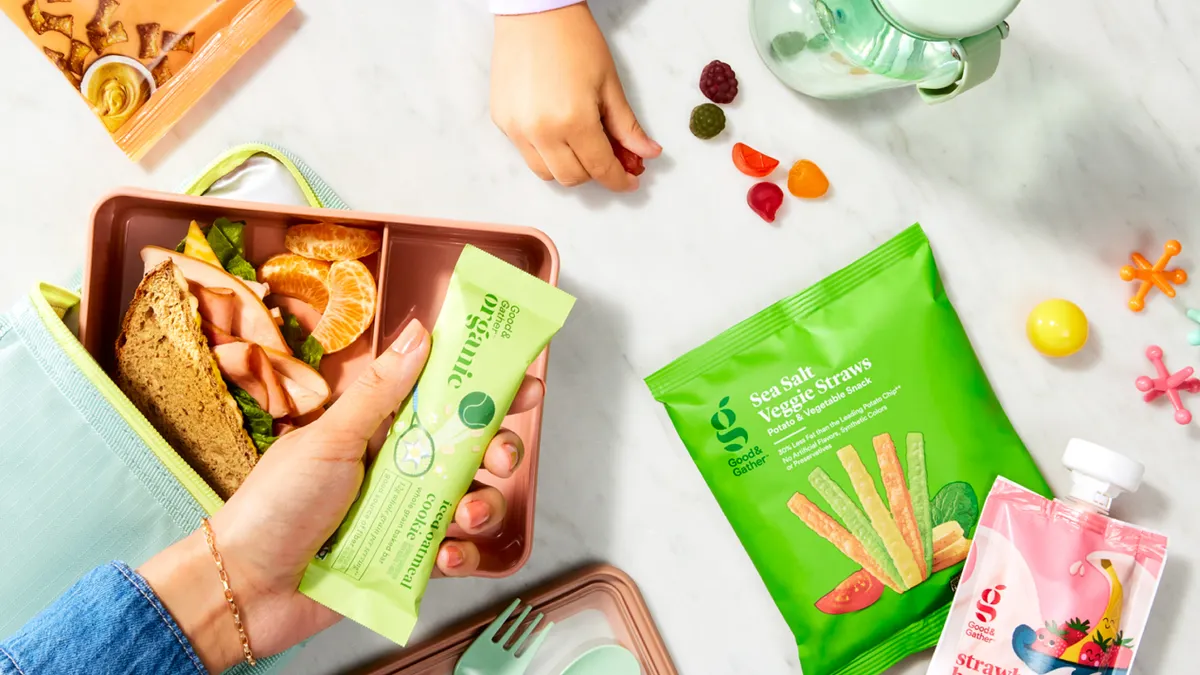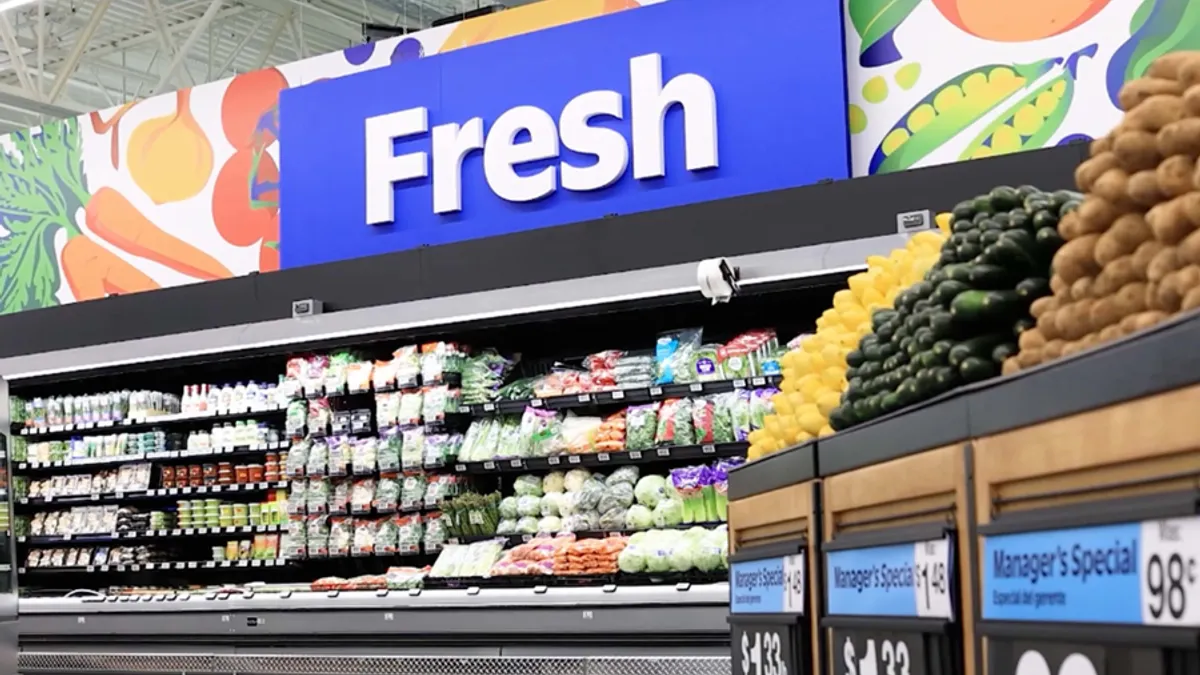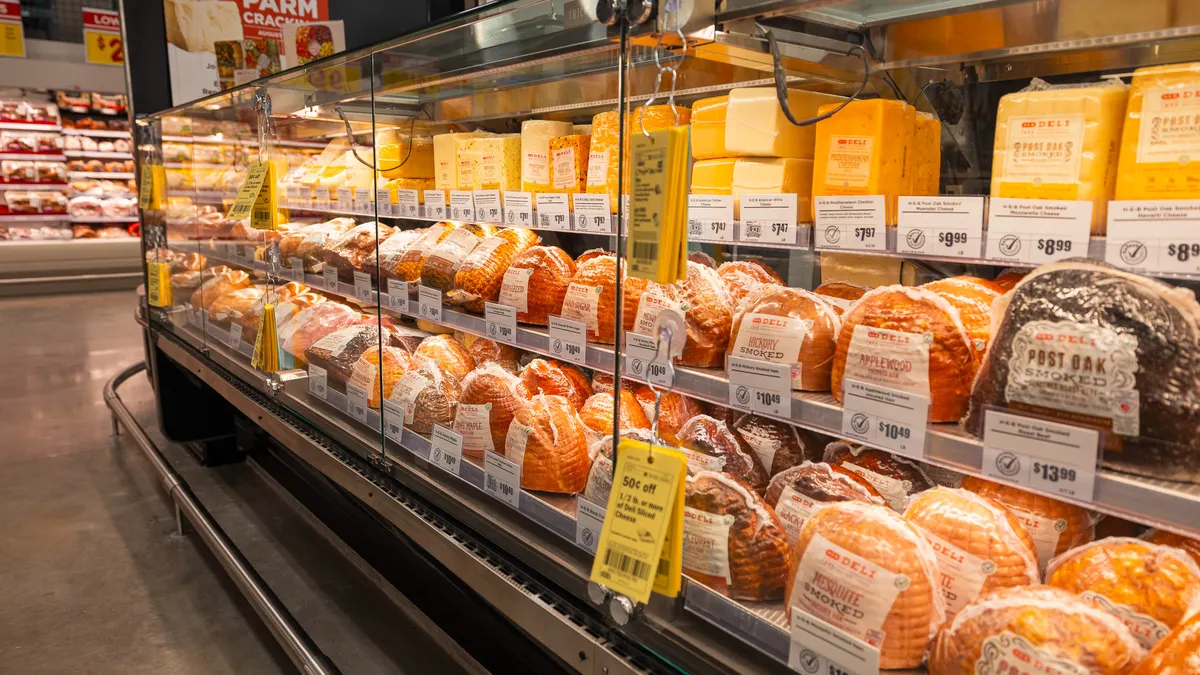"On Special" is a monthly look at evolving store categories with insights on how different grocers are capitalizing on top trends.
Grocers have had choppy seafood sales performance — but there are opportunities for the tide to change in supermarkets’ favor.
While seafood faces a perception by consumers that it is expensive and indulgent, health benefits and sustainability impacts provide positive impressions around the category’s offerings, FMI — The Food Industry Association noted in its newly released Power of Seafood report. U.S. consumers are cooking seafood now more than before and becoming more comfortable preparing it at home.
Seafood is steadily seeing gains in the percentage of consumers who say they occasionally or frequently consume seafood, up to 64% in 2023 from 57% in 2019, according to the FMI report. The Power of Seafood report is based on a survey of 1,949 U.S. adult grocery shoppers conducted between Nov. 9 and Nov. 18 and also cites Circana data.
Grocers have an incentive to reel in more seafood dollars. According to Circana data cited in the report, the average basket spend is more than double when a shopper buys seafood.
Here’s a breakdown of the most popular seafood items shoppers purchase from grocers and how grocers are looking to boost sales in the category.
 Data insights
Data insights
In 2023, supermarkets’ seafood sales totaled $18.8 billion, with fresh items accounting for $6.2 billion and frozen products bringing in $6.7 billion, according to Circana data cited by FMI.
Sliding sales in frozen and fresh led overall seafood’s sales decline in 2023
The shares of households that bought fresh or frozen seafood both declined nearly 2% in 2023, and lower prices for those offerings did not appeal enough to shoppers to increase unit sales, FMI found.
Seafood department’s “big four” — shrimp, salmon, tuna and crab — account for over 70% of seafood sales, FMI noted. Among the big four, crab was the only to post positive sales (3.8%) and unit sales (14.6%) growth in 2023 compared to 2022, according to Circana data cited by FMI.
Prices for popular seafood items have mostly decreased from last February but are still higher than the same time in 2021
In February, seafood prices decreased for fresh and frozen compared to a year ago, according to Circana data cited by 210 Analytics. Fresh seafood’s average price per pound of $9.30 put it well above the average price per pound for chicken ($3.07), pork ($3.14) and beef ($6.46).
Fresh salmon prices declined in February after beginning to level off in the fourth quarter of 2023, which 210 Analytics attributed to more favorable wholesale prices and more retailer promotions.
Frozen seafood experienced deflation in February compared to the same month in 2023, 210 Analytics found, noting that the average price per unit for frozen seafood was $9.92, down 7.5% from a year ago.
Stand out grocers
Offering a standalone fish market
On its downstairs level, Wegmans’ Manhattan store at 499 Lafayette St. has a dedicated market featuring fresh seafood from “top suppliers” including Japanese fishmonger and retailer Uoriki, which has its offerings at the Toyosu Fish Market, a Tokyo wholesale market that is one of the largest fish markets in the world.
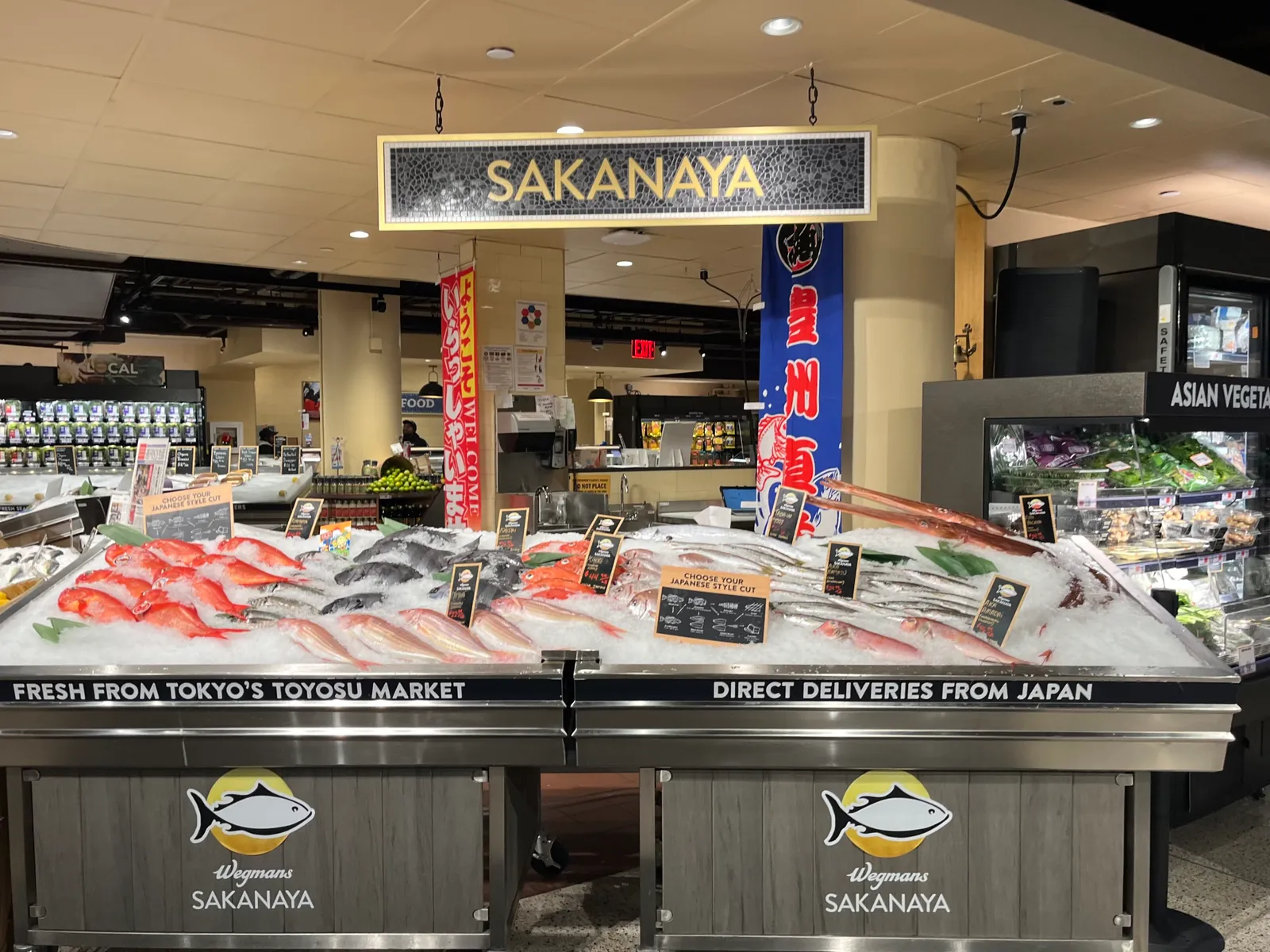
For the store’s Sakanaya, which means “fish market” in Japanese, Wegmans flies in fresh Toyosu seafood offerings several times a week. Workers at the store learned cutting and preparation techniques from Uoriki’s expert fishmongers during a festival the grocer held at its store in Washington, D.C.
Rolling out more sustainable aquaculture practices
Ahold Delhaize’s Food Lion and Hannaford banners have signed up to support a new initiative that aims to decarbonize the Thai shrimp supply chain, according to an announcement earlier this month. Seafood producer Thai Union Group collaborated with global environmental organization The Nature Conservancy and Ahold Delhaize USA on the initiative.
The pilot program aims to produce 1,000 metric tons of processed shrimp imported by Thai Union subsidiary Chicken of the Sea Frozen Foods that “is both lower impact and meets the highest product quality standards,” with products that are fully traceable from hatchery to the final point of shipment. The program is focused on making on-farm investments that enhance efficiency and productivity, reduce energy usage and increase sourcing of sustainable feed ingredients.
Food Lion and Hannaford have agreed to purchase shrimp from the program.
Fishing for more private label sales
Seafood is playing a key role in Kroger’s store brands’ expansion. The grocery company announced earlier this month the addition of new oven- and microwave-ready seafood meals spanning its Private Selection, Kroger and Home Chef brands. Kroger is positioning the new items as “affordable and easy-to-prepare” meal solutions that aim to make seafood preparation more streamlined for consumers.
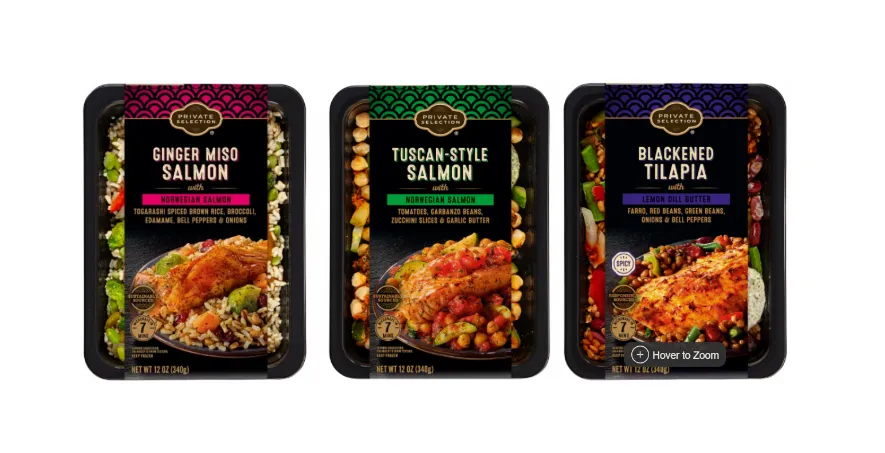
 What's trending?
What's trending?
Netting bigger seafood sales
Giving seafood a starring role in marketing campaigns can pay off. H-E-B saw seafood sales soar with its month-long marketing campaign in January with the Seafood Nutrition Partnership (SNP), SNP noted on its website.
Called “Fall in Love with Seafood,” the campaign leveraged nine H-E-B seafood suppliers and influencers like Valentine Thomas as it aimed to boost consumer awareness of how to more regularly eat “delicious and healthy seafood,” said Linda Cornish, SNP founder and president.
The campaign garnered 20 million views and provided a $4.24 return on investment for each $1 of marketing spend. H-E-B saw double-digit sales growth compared to the previous 12 weeks for products in the campaign as well as gained 6.2 seafood category share points in seafood for January.
Making seafood less daunting
With sustainability as a major area of focus among consumers buying seafood, FMI noted that the grocery industry can do a better job of helping shoppers navigate the myriad of sustainability aspects in this category. A seafood counter is a prime way, FMI noted, to interact with customers and answer their questions as well as boost the perception of quality and expertise.
A majority of seafood consumers said they plan their seafood purchase and among those shoppers, almost 60% said a sale price is most likely to prompt an impulse buy — indicating discounts are a key way to spur unplanned seafood purchases, FMI found.
The trade group is also encouraging grocers to give customers cost-effective and nutritious seafood preparation offerings.
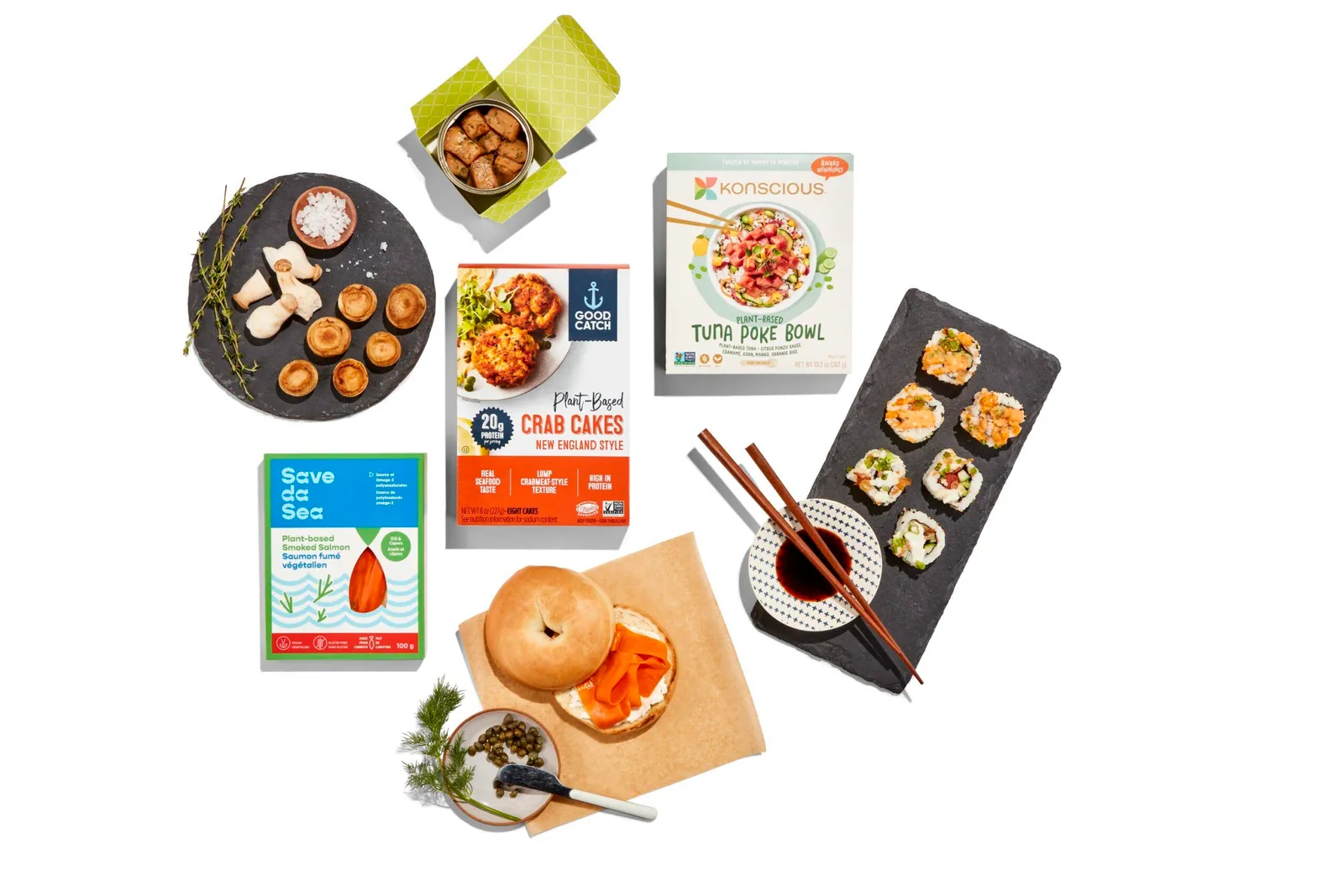
Fancy Faux Fish
For its trends predictions for 2024, Whole Foods Market is betting that the “fancy fish trend” will collide with plant-based interest from consumers. The Amazon-owned specialty grocery chain noted that tinned fish and caviar took off in 2023 and that some plant-based seafood brands are offering flavors and textures that “rival the real thing.



